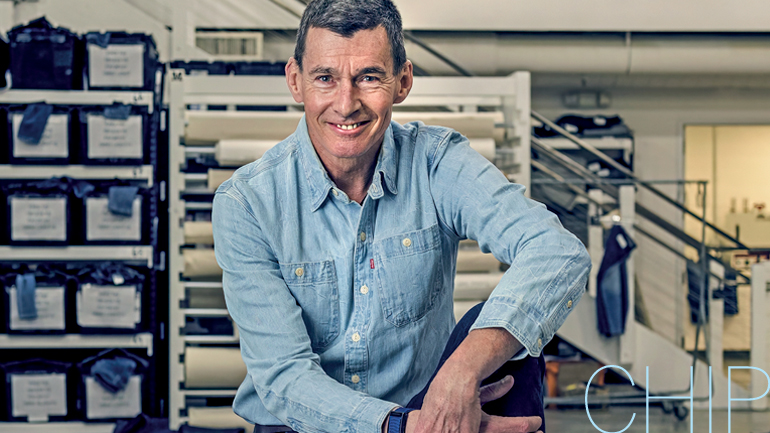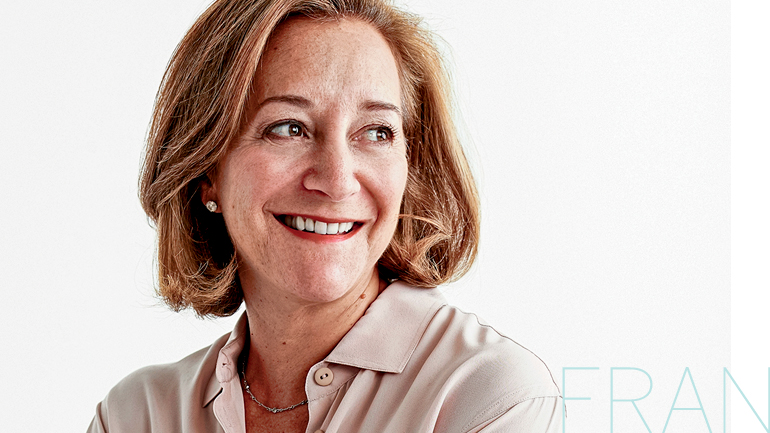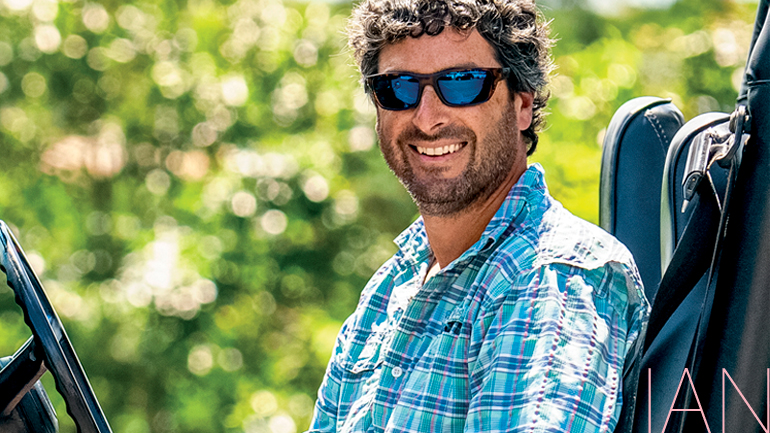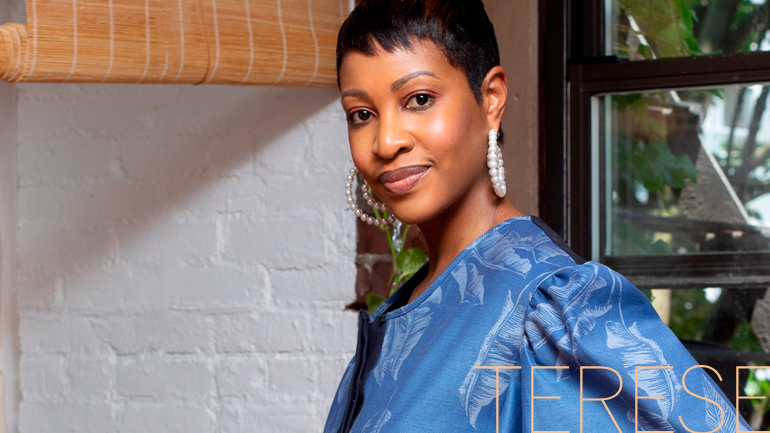Retail Evolution
As COVID-19 upended the entire world in spring 2020 and protest movements advocating for racial justice blossomed around the country, a group of Lafayette alumni—all leaders in the fashion and retail industry—faced the most difficult decisions of their careers. Between them, they manage thousands of employees, billions of dollars of revenue, and supply chains that cross the globe.
As they juggled the safety and stability of their employees and businesses, they were forced to adapt—drawing on leadership styles honed from decades of experience, starting with their very first days on our College Hill campus. Here, they explain how they have navigated this tumultuous period.
Chip Bergh ’79
CEO, Levi Strauss & Co.
 Inside his home office, staring at the tiny camera on top of his computer screen, the CEO of Levi Strauss & Co., Chip Bergh ’79, reflects on the past 20 months. This is how business leaders work now. Across every industry, no matter the size of their company, the legacy of their brand, and the revenue they generate, their world has shrunk to a screen and a camera, steps away from their families, their pets, and their very un-corporate lives at home.
Inside his home office, staring at the tiny camera on top of his computer screen, the CEO of Levi Strauss & Co., Chip Bergh ’79, reflects on the past 20 months. This is how business leaders work now. Across every industry, no matter the size of their company, the legacy of their brand, and the revenue they generate, their world has shrunk to a screen and a camera, steps away from their families, their pets, and their very un-corporate lives at home.
“I don’t feel like we have been hit with just one crisis,” Bergh says. “I feel like we have been hit with three or four crises.”
Chip Bergh strolled through Lafayette’s campus during freshman orientation in 1975 with long hair and a love of sports. The Vietnam War had just ended, and military service was, Bergh says, “the last thing on my mind.”
But when he passed a tent of student cadets recruiting new members to ROTC, “They put the pitch on me. They told me that even if I signed up and dropped out after just a couple weeks, I’d still get to keep the army boots.”
So he joined. But instead of quitting with some new footwear, he earned an ROTC scholarship and graduated four years later with an Army commission. “My military experience was life changing, shaping who I am now as a leader,” he says.
Months after graduation, 21-year-old Bergh became a second lieutenant and platoon leader in West Germany during the thick of the Cold War. Five men who served under him fought in Vietnam. “They all had bullets flying over their heads, they all had friends that they lost. They were hardened combat veterans, yet they had to salute me and call me ‘sir,’” he says. “It grows you up. I learned very quickly I had to earn their trust and respect.”
Four decades later, Bergh had to again learn very quickly how to lead through unprecedented circumstances and to earn the respect of those who work for him. This time, leading one of America’s most iconic fashion brands during a pandemic.
“In one of those early calls, I said I was proud of what we’ve accomplished over the last 10 years—we turned the company around, we took it public back in 2019, our business was up 6% the quarter before the pandemic hit us—but nobody’s ever going to remember me for these things. This—the pandemic—is the defining moment for us.”
Throughout his 10-year helm as CEO, Bergh has never been shy using his platform to speak out on social issues: from voting rights to gun safety to racial justice. Which is why he felt it essential to make clear right away that Levi Strauss would be an example of how to prioritize the health, safety, and stability of its employees.
Though the company had to close all its U.S.-based stores, Bergh ensured those employees were kept on the payroll for four weeks. When the company was forced to furlough members of the staff, “we didn’t do it until the government stepped up and put a topper on unemployment,” he says. The company also instituted up to eight weeks of paid family leave for benefit-eligible employees.
“One of the muscles I feel I really had to develop during the pandemic was empathy,” he says. “When you’re on these Zoom calls, you are in people’s homes. You begin to realize how stressful the pandemic was. Particularly in those early days. So I really developed a huge sense of responsibility to make sure we took care of our employees.”
During the summer of 2020, that responsibility didn’t stop with just COVID-19. As protests grew in reaction to the deaths of George Floyd, Ahmaud Arbery, and Breonna Taylor, Bergh says he had his own racial reckoning.
“We aren’t where we need to be from a diversity, equity, and inclusion standpoint,” he says. “So I declared it an issue, publicly. I said it was probably my biggest failure as a CEO over the last 10 years to not be making more progress on this . . . I would say that what the crisis of the pandemic did for me was that it shined a spotlight on the interconnectedness of issues like gun violence and voting rights that disproportionately impact Black and brown communities. And, you know, I can’t fix all the country’s issues, but as the CEO of this company, I can sure get us focused on our big opportunities and commit to real progress.”
Bergh ties this mission back to his experience in the Army. “I learned early that your title or the office you hold matters only a little bit,” he says. “It is about trust and respect. And the way you do that is through authentic leadership.”
Fran Horowitz ’85
CEO, Abercrombie & Fitch Co.
 For years, Fran Horowitz ’85 kept receiving the same feedback from her employees in performance reviews: “You’re so normal.” At first, she was puzzled by that response, unsure exactly what they meant by “normal.” But as her career grew from an international relations major at Lafayette College, to buying and merchandising positions at retailers like Saks Fifth Avenue, to leading Abercrombie & Fitch Co.’s Hollister brand in 2014 and serving as the company’s chief merchandising officer, to eventually becoming CEO in 2017, she understood they were recognizing one of the strengths of her leadership style.
For years, Fran Horowitz ’85 kept receiving the same feedback from her employees in performance reviews: “You’re so normal.” At first, she was puzzled by that response, unsure exactly what they meant by “normal.” But as her career grew from an international relations major at Lafayette College, to buying and merchandising positions at retailers like Saks Fifth Avenue, to leading Abercrombie & Fitch Co.’s Hollister brand in 2014 and serving as the company’s chief merchandising officer, to eventually becoming CEO in 2017, she understood they were recognizing one of the strengths of her leadership style.
“I think it means I am approachable, I am caring,” she says. “It goes beyond asking them questions about what they are doing at work every day, but understanding their personal situations and having empathy and compassion for them as people. And that is how I have always, always led organizations.”
Empathy, compassion, approachability—these words may not have typically been associated with the Abercrombie & Fitch brand of the early 2000s. But when Horowitz took the reins of the entire corporation in 2017, she flipped the brand—and the entire company—inside out, changing its focus to be on what customers need, and ushering in a spirit of welcomeness and inclusivity.
With her guidance, the Abercrombie & Fitch and Hollister store experiences were completely changed. One of the first things Horowitz did was shift the overall stores’ strategy to prioritize being available to customers rather than mainly focusing on the presentation of products. Additionally, the lights were literally turned up at all locations, and the music was turned down to create a more welcoming atmosphere. Furthermore, Horowitz took feedback from customers and associates and grew the company’s role in anti-bullying, LGBTQ+, and social justice issues. Abercrombie & Fitch Co.’s image began to change.
Nowhere was Horowitz’s leadership style and the company’s cultural shift more important than on the morning of March 14, 2020. At the time, COVID-19 wasn’t an abstraction for Horowitz; the global company had already shut down stores in parts of Asia and supply chains had been disrupted. At 7 a.m., Horowitz received word that Apple and Nike were closing their U.S. stores. The pandemic was no longer a distant threat, but something that was going to force her to make drastic and rapid decisions.
She called a meeting with her leadership team at their headquarters in New Albany, Ohio. They decided to close all their global stores and adopt a work-from-home policy for corporate employees. “We spent the day trying to figure out what to do, keeping in mind that the health and safety of our associates around the world was our No. 1 priority,” she says. “We woke up the next morning with 70% of our revenue, which is the percentage derived from stores, evaporated. That was quite a breathtaking moment for all of us.”
To navigate the crisis, Horowitz leaned on her strengths, including listening to and trusting her teams across Abercrombie & Fitch Co.’s global home offices and its store network. “I had to make sure I understood how everyone else was feeling,” she says. “On my leadership team and across the organization, we have families with young kids. We have young adults living on their own for the first time. It was very important for me to make sure that I could relate and understand. And the only way to do that was with very clear communication.”
She began sending weekly emails to the entire company, and soliciting as much feedback across the organization and externally as she could. She listened and learned, not only from her teams at A&F Co., but also from the company’s customers and communities. She remained nimble and flexible, constantly adapting the business as the environment evolved, focused on executing to the near-term while not taking her eyes off longer-term goals. And these efforts worked. In fiscal 2020, the company’s profitability grew by over 2%, and that momentum has continued in fiscal 2021, with operating margin growing by over 22% in the first half of the year.
Aside from Abercrombie & Fitch Co.’s business success, the company also has evolved internally. “We have an expression here, ‘feedback is a gift,’” Horowitz says. “That wasn’t part of the culture when I started.”
Horowitz says that is one of the key reasons Abercrombie & Fitch Co. has weathered the worst of the pandemic—because the organization’s leaders are transparent, empathetic, and approachable. Nothing has been normal for the company the past year and a half—except, perhaps, their boss.
Ian Murray ’97
Co-founder and CEO, Vineyard Vines
 The founding story of Vineyard Vines has been told so much in the media and around startup circles it almost seems apocryphal: Two brothers, both sick of their corporate jobs, get tipsy one night and devise a plan to quit and sell loud, preppy (now widely recognized) ties out of the trunk of their car up and down the East Coast.
The founding story of Vineyard Vines has been told so much in the media and around startup circles it almost seems apocryphal: Two brothers, both sick of their corporate jobs, get tipsy one night and devise a plan to quit and sell loud, preppy (now widely recognized) ties out of the trunk of their car up and down the East Coast.
The tale, though, is true. And in just over two decades, those brothers grew their idea into a nearly $1 billion business.
But it’s not quite accurate to hinge the success of the idea on the night Ian Murray ’97 and his brother, Shep, had a few drinks. Because before they could hit the road and sell, they needed to know how to build a following.
For Ian Murray, that experience started his freshman and sophomore year at Lafayette College. A member of the band In the Attic, he helped the group grow from the garage to the bar to touring college campuses around the region. One at a time, they sold more than 10,000 CDs before the social media era.
“You didn’t have to have the best players and the best band; like, I wasn’t the best at my instrument, but you needed to have great energy, and you needed to have a lot of fun and be a part of something that was magnetic,” he says.
The ability to keep the crowd entertained and to build a bit of a spectacle guided Murray and his brother as they launched Vineyard Vines. “We were selling neckties, probably the most boring thing you can think of, and in the late ’90s, it was a time when casual wear at workplaces was becoming popular,” he says.
So to build a following, Murray relied on energy and spectacle, whether it was placing their now iconic whale logo on boats at regattas in New England, or always wearing shorts, a white button-down shirt, and the tie whenever they went out to bars. “People would ask, ‘Why are you wearing that tie here,’ and we would tell them about the company,” he says, always with a backpack full of the product to sell on the spot. “It was more about the approach and less about the product.”
Little by little, and then very quickly, Vineyard Vines built a massive following.
As the business grew to employ thousands across the country, Murray made sure each morning and evening to walk through every floor and make a personal connection with as many people as possible.
Which is why the pandemic didn’t just fundamentally change how Vineyard Vines could operate as a business, but also how Murray could interact and collaborate with his employees. It’s ironic, then, that Murray says remote work has helped him listen and find ideas in unexpected places. When he holds Zoom meetings with small groups of people, he’s found they are more willing to speak up and offer ideas.
Many of those ideas became a reality, including building a new platform that offered incentives for groups like first responders and health care workers to shop virtually and receive deals.
Murray says that through the tumult, the company honed in on its three key goals: “1) Make Vineyard Vines a great place to work, 2) deliver an exceptional customer experience, and 3) drive profitable sales.”
Vineyard Vines achieved all three. “Now, as we emerge from a challenging couple of years, we are more disciplined in our approach and have a great foundation for success, and we are seeing positive results,” Murray says.
Vineyard Vines may very well be entering into a new era of its business. With a larger reliance on online sales, Murray says the business has become more nimble and been able to heed ideas from more sources around the company.
What hasn’t changed, though, is Murray’s focus on keeping the brand energized and magnetic. It’s what he’s known how to do for more than two decades, and what drove him to escape his corporate gig and become an entrepreneur.
Terese Brown ’07
CEO and founder, Terese Sydonna
 Terese Brown ’07 knows how to reinvent herself. It started at age 7, when she immigrated to the United States, replacing the pastoral countryside and beaches of rural Jamaica with the steel and asphalt bustle of the Bronx in New York City, a melting pot of culture, brought by immigrants from around the world. She fell in love with the neighborhood.
Terese Brown ’07 knows how to reinvent herself. It started at age 7, when she immigrated to the United States, replacing the pastoral countryside and beaches of rural Jamaica with the steel and asphalt bustle of the Bronx in New York City, a melting pot of culture, brought by immigrants from around the world. She fell in love with the neighborhood.
Months after she arrived, her grandmother gave her a Barbie. A collection of dolls started to grow as she let her imagination bring them to fabulous places, always in a miniature pink limousine. She especially loved dressing them up, giving them stories and identity through the clothes they wore. The move was like “an explosion of experiences” she says. Her grandmother, a former seamstress in the factories of Jamaica, taught Brown how to sew. When she reached middle school, Brown would often get into trouble after cutting up her jeans to remake them into skirts or dresses. A passion for design and fashion, Brown says, “was always inside me.” She honed that skill at the High School of Fashion Industries in Manhattan.
After receiving the highly selective, full-tuition Posse Scholarship to attend Lafayette College, Brown chose to double major in economics and visual arts. “I feel like I needed that balance,” she says. “I continued to design, and I put on fashion shows while I was attending classes, but I was able to develop my business savvy on the economics side.”
That combo landed her a full-time job after graduation as an assistant buyer at Lord + Taylor. She was in the fashion world, but she felt like her creative and design aspirations had been put to the side. Which is why, when the financial crisis left her without a job in 2009, she took the opportunity as a blessing—another chance to reinvent herself. This time diving fully into her true love, fashion design.
She received a degree from the Fashion Institute of Technology and founded her own label, Terese Sydonna, in 2011. It took three years and visits to nearly 100 stores before her first clothes were displayed in 2014. “It’s extremely hard to get into the first store,” Brown says. “But once you are in, the dominoes start to fall.”
For six years, her business steadily grew as she focused on selling her vibrant collections wholesale to brick-and-mortar stores around the country. It all came to a devastating halt when the pandemic hit in March 2020.
“There was probably three months where I didn’t make a single sale,” Brown says. Not only were stores not able to sell her existing inventory, she couldn’t order new materials because factories had been shut down. Her business threatened, she had to figure out once again how to reinvent herself.
“I decided to make face masks, and that is literally what saved my business,” she says.
She used scraps and leftover raw materials from clothes that had yet to be made, sewing hundreds of masks herself. With help from social media, which Brown had never seriously invested in until last year, the colorful, patterned cloth masks became wildly popular in New York City and beyond. Her new fans clamored to purchase her clothes, so she expanded her e-commerce site and no longer focused on selling inventory to stores.
Her social following grew even more in the summer of 2020. As industries across the country grappled with the racial justice movement spurred by the protests over the death of George Floyd, Brown saw an opportunity for the first time to speak openly about her experience as a Black woman working in the fashion world.
On Instagram and other social platforms, she started to share about the many times brands pressured her to use white models in her catalogs. Or the time a store owner canceled a meeting after she arrived and realized who she was. “There’s so many excellent designers of color out here in the market who don’t get the same opportunity,” she says. “I have to prove myself way more. A brand might take a chance on an unknown designer whose work is nice, but maybe has no sales. But for me, I have to present that I’m in all these stores and I have this amount of sales. So much more is required.”
She saw more and more customers looking to support Black-owned businesses, and she was able to evolve in order to sell straight to them rather than using a brick-and-mortar store as a middleman.
“When I was forced to pivot to e-commerce last year—and when I invested heavily into digital marketing and social media—I found freedom. I found a new way to be more sustainable and to be more in alignment with my values.”
The pandemic almost caused Brown to lose her business. But it also may have helped her grow even faster. Moving forward, she plans on releasing at least two collections a year and selling them directly to the growing fans she has found online.
“I need to be more open, I need to be more vulnerable, I need to share more about my journey so that people really see what it took to get to this point and what it means to truly be self-made,” she says. “I think to be in this business for 10 years it requires so much resiliency. And for you to constantly reinvent yourself.”